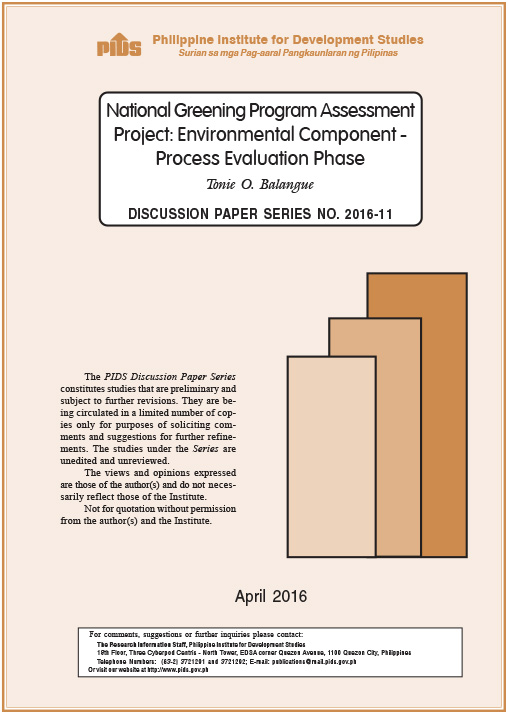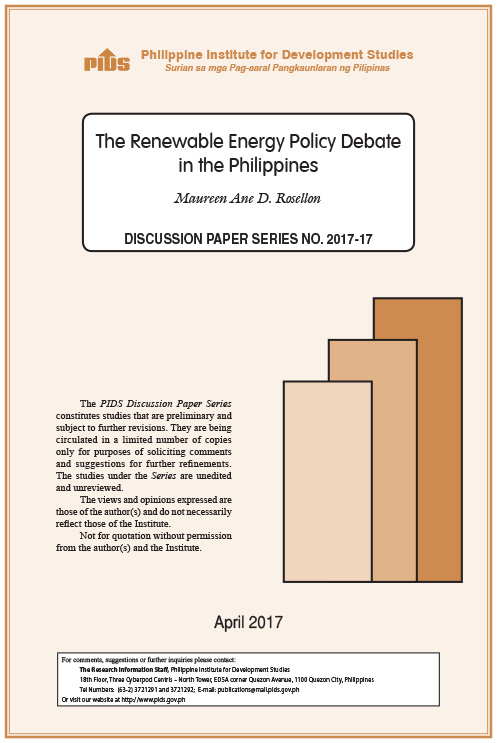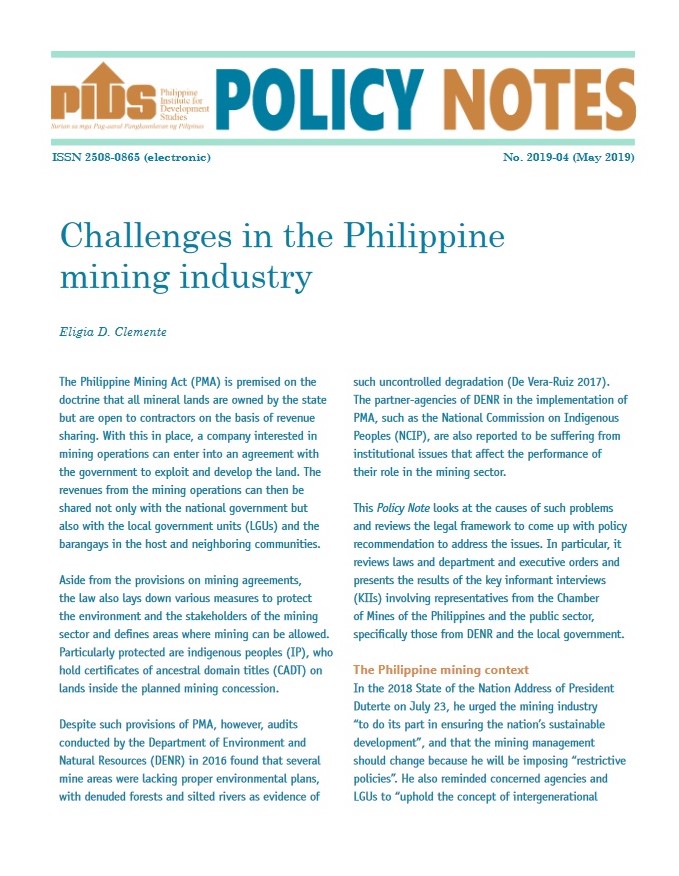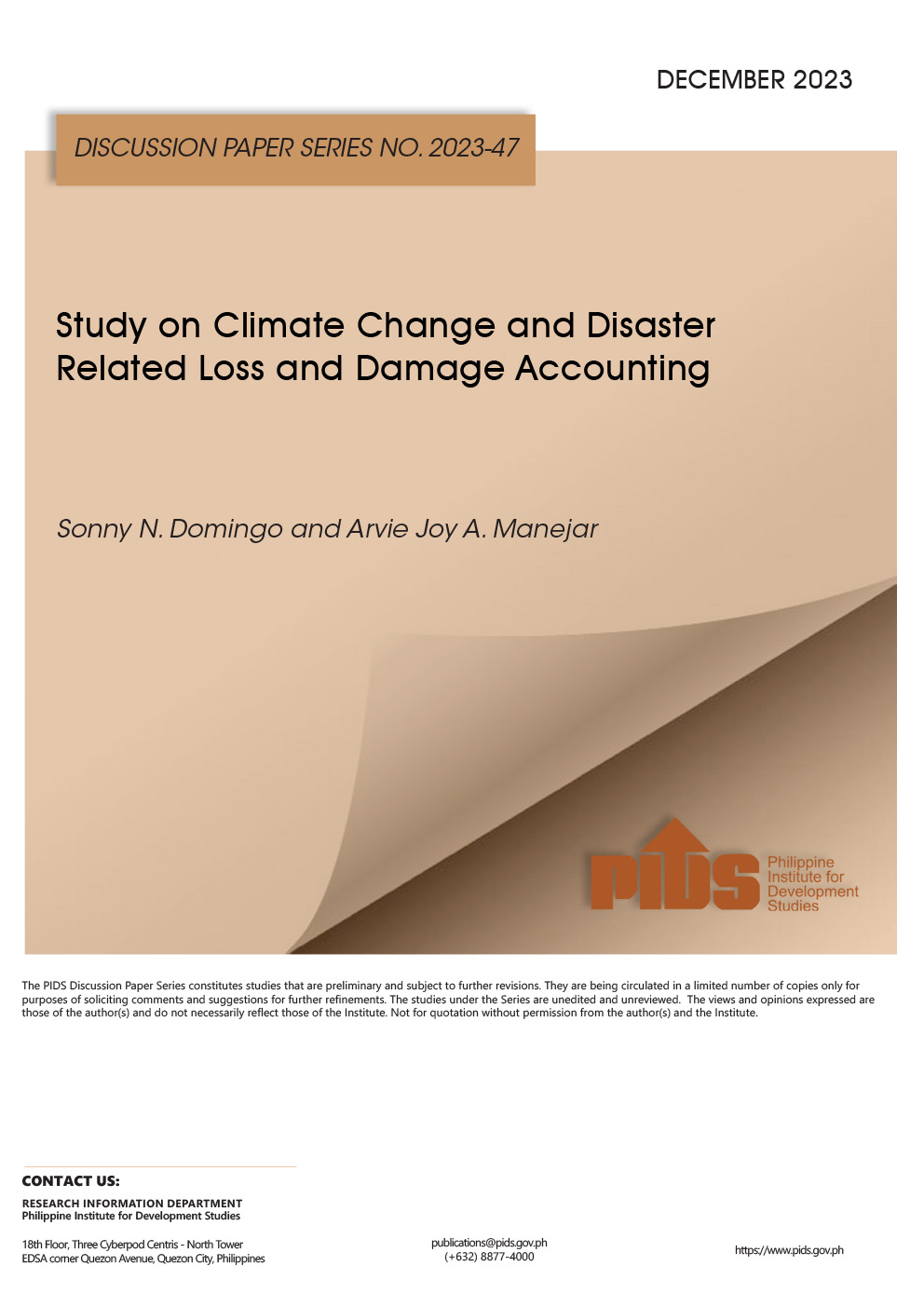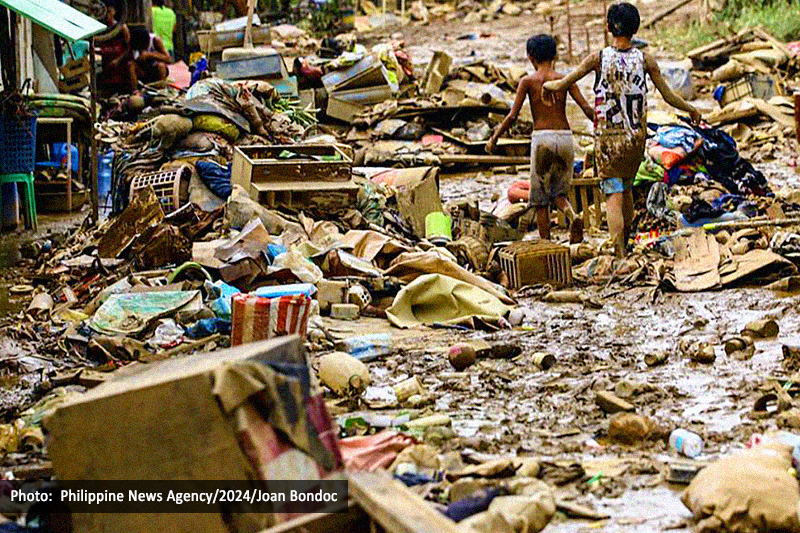This paper assesses the National Greening Program (NGP) process as implemented in the field and the environmental impacts. The municipalities of Sta. Cruz in Zambales, Basilisa in Dinagat Island, and Hinobaan in Negros Occidental were randomly selected from all the NGP sites. The methodology employed consisted of key informant interviews and focus group discussions for the survey, mapping, and planning (SMP); assessment of capability building, plantation quality assurance, seedling production, planting, and protection and maintenance; and actual impact measurements on the ground through sampling.
Results showed that the required NGP processes were not fully complied with. However, the required survival rates of 85 percent were satisfied through replanting. The environmental impacts were gaining positive momentum through reduced temperature, soil build-up, soil fertility, soil moisture, wildlife, stumpage build-up, and carbon sequestration. Impacts on disaster risk reduction and climate change fell short due to lack of a suitable design. Recommendations to further improve NGP implementation include, among others, conduct of a full-blown SMP and feasibility study, compliance to required processes and standards, inclusion of a reforestation access road, linking reforestation to a business plan, and capability building of reforestation partners.

